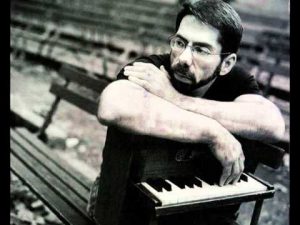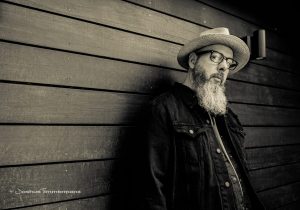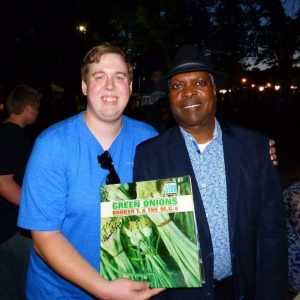
Colton and Booker T, July 2017
I first met Colton Thomas in Roseburg, Oregon last 4th of July. Polyrhythmics had the amazing opportunity to open for Booker T at the Douglas County Fairgrounds, and Colton, who lives in the area, was there for the show. Colton does A&R work for Transistor Sound, a record label and recording studio in the Bay Area, and has known Monophonics frontman and Transistor Sound main man Kelly Finnigan for some time. I also found out he has traded music choices online with True Loves and DLO3 guitarist and fellow classic Soul/R&B fanatic Jabrille Williams, and has maintained contact with a huge number of Soul and R&B greats over the years.
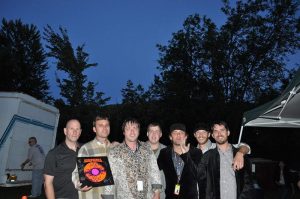
Colton and the Monophonics, July 2012
I became Facebook friends with Colton a little while later, and it was then I realized the depth of his passion for Sweet Soul, Group Harmony, and other Soul and R&B styles. He collects 45 rpm records as well as classic press photos, and I began to notice his posts relating to both, from groups like the Four Tops, Little Anthony and the Imperials, the Spinners, and so many more, often underrated or undiscovered.
Colton is a dedicated collector, to be sure, but I was fascinated by how much further it goes; in the sections beneath his posts I would see comments from family members and friends of the posted musicians, and sometimes the musicians themselves would write in on his posts! It became clear that Colton knows many of these legendary singers and artists and their families as friends at this point, and he is actively invested in getting their music out there today. I decided to try to interview Colton for the blog, and he was excited to do it. As expected, I learned a tremendous amount about the groups and sub-genres associated with classic Soul and R&B!

The Dontells, an example of Sweet Soul
Colton was interested in music from a very young age; he remembered bringing a cassette tape of himself singing Louis Armstrong’s “What a Wonderful World” to Show and Tell in kindergarten. Another formative experience was his 13th birthday, in 2003, when his parents got him tickets to see James Brown in Jacksonville, Oregon. He said it was incredible, and remembers Brown unexpectedly using a Korg keyboard, sometimes playing it backwards!
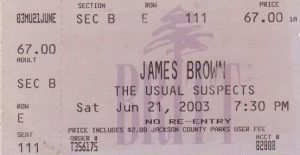
Through his family’s antique store, which is still going strong today, he had his first experiences with recordings. He told me he remembers the first record he ever got: The Four Tops – Second Album (“that’s a great record”). From there his love for Soul and Vocal Harmony music took off.
After hearing about some of his early experiences getting into this music, I was able to get to one of the aspects of Colton’s interest that fascinated me the most. I asked him how he started getting into contact with so many amazing elder musicians, and he told me it really started with Myspace.
Colton started a Myspace page called Soul Legends, where he could write about the records and artists he loved, and soon he was reaching out and finding the Myspace pages belonging to the singers and musicians he admired. By 2009, Colton was conducting interviews, the first of which was Tony Drake, who sang “Let’s Play House”(originally released in 1969). An interview with Larry Cunningham of The Floaters (listen to “Float On” from 1977 here) soon followed. He was able to do these interviews through Blog Talk Radio, a site that allows you to create your own radio show. Colton’s show was called Soul FM, and he continued to interview more and more artists in this way from 2009 on. At the time of the interview with Larry Cunningham, Colton was 17 years old. SEVENTEEN!!
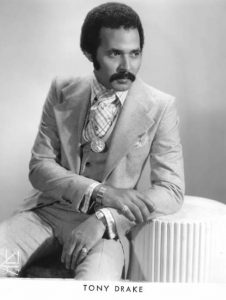
I just can’t imagine seeking out the music, connecting with these luminaries and legends, and starting your own interview-based radio show at 17; I thought that was remarkable.
The Soul FM show allowed for fans and musicians to call in and talk to Colton or whoever he was interviewing, which then led to more connections across the country for him to share in his musical loves, and it could be unexpected who might end up calling: When Colton was interviewing Little Anthony of Little Anthony and the Imperials, he saw a call come up, but did not want to interrupt Anthony, as he was in the middle of a story, so he didn’t pick up the call. Afterward, he got a Facebook message from R&B musician Jimmy Castor saying it was he who was calling in. Castor passed on a while after that, and Colton said that not taking that call is “one of [his] biggest regrets to this day.”
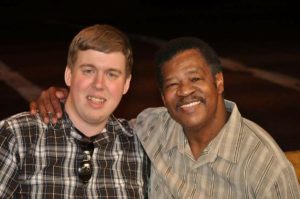
Colton with Jerry Lawson
A particularly fun memory Colton recounted to me was from 2013, when he traveled to Mesa, Arizona to see family. Because Scottsdale was near by, and because he had kept in contact with Jerry Lawson – of The Persuasions –, Colton and Lawson arranged for Lawson to pick him up to hang out (“I don’t know what kind of car it was but it was a really cool car,” Colton said). They ended up grabbing some ice cream, and, at the end of the night, going to a karaoke bar, called the Grapevine, together! Colton ended up picking a Persuasions song out of the karaoke book for Lawson to sing, and Colton got into the act too, singing the Spinners.
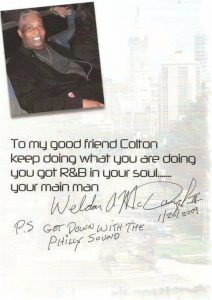
Autographed note from Weldon McDougal
There were others who were surprised to find out a white teenager in Southern Oregon was running such an extensive online tribute to classic Soul and R&B. One of the fellow music afficionados Colton met through his Soul Legends Myspace page was T.L. Harris, who told Colton that he thought Soul Legends was run by “an 80-year-old black man from Detroit”. When Harris saw a photo of Colton, at 16 years old, with Duke Fakir of the Four Tops, he said it blew his mind! He reached out to Colton online and introduced him to Weldon McDougal
Weldon McDougal was a prolific singer, songwriter, and producer (he sang some of the background vocals on “Yes I’m Ready” by Barbara Mason) who worked at Philadelphia International Records as well as Motown Records. He became good friends with Colton, and had many stories, including some from his childhood.
McDougal told of living in the same Philadelphia neighborhood as Screamin’ Jay Hawkins. He remembers that Hawkins had a coffin that he used as part of his stage performance, but he would leave it outside on his front porch in Philadelphia, and as a child McDougal and his friends would dare each other to go on the porch and get inside in the coffin. I believe Colton said that McDougal told him they very nearly got caught once, and Hawkins scared them off!
Another memorable story McDougal told Colton and Harris involved legendary bassist James Jamerson. While McDougal was at Motown, the 1973 documentary Save the Children was being filmed, and Marvin Gaye and his band (of which Jamerson was a part) were featured in the film. McDougal remembered coming to the hotel to pick Jamerson up to take him to the venue and discovering that Jamerson had drunkenly trashed his room and was getting grief from hotel staff. As the story goes, on the way out of the hotel, Jamerson hopped over the hotel clerk’s desk and karate-chopped the clerk, letting out a loud “Hi-YAH motherf****rs!!”
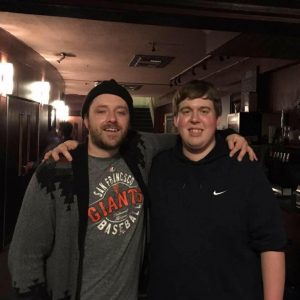
Colton with Kelly Finnegan
After meeting Kelly and the Monophonics in July of 2012, Colton kept in touch, and in January of 2017 he signed a contract to become involved with A&R for Transistor Sound, a record label that advocates for unheard, unreleased, and underappreciated Soul music. To a certain extent, the label is perfect for Colton; it provides a very real vehicle for him to bring the music and musicmakers he loves to more public notice, and he can continue to work towards giving them and their families the recognition they deserve. The Dontells, pictured at the beginning of this post, is the 1st reissue Colton has helped put out through Transistor Sound, largely with the help of the late Bob Abrahamian, who was a generous collector and Soul music aficionado from Chicago that Colton originally met on an online forum called Soulful Detroit and really looked up to. You can read a tribute to Bob here.
Implicit in some of our conversations, I think, was how many black groups and artists making music in the 50’s and 60’s were taken advantage of, and not given their fair public and financial recognition. I believe Colton mentioned that Weldon had some stories about how important it was to watch your money and be careful what you sign. That adds another spin on Colton’s mission to find underappreciated recordings for reissue.
In addition, Colton himself sings, and there may be a Colton Thomas release at some point down the road!
Colton credits social media for allowing him to make the connections he’s made over the years. Those Soul legends that he initially found on Myspace became friends and mentors that he regularly calls on the phone to talk to and hear stories from. The way he put it, without social media he never would have had the opportunity to hang out with groups like Smokey Robinson (Colton interviewed bass player Gary Foote on his Blogtalk show, who then set up a backstage meeting between Colton and Smokey in 2011) or the Temptations (Colton met veteran road manager Billy Bannister at a performance, who then introduced him to Otis Williams, last original member of the Temptations, backstage at another performance).
I didn’t have the heart to ask too deeply about the number of singers and groups Colton has befriended that have passed on, but it was definitely on my mind during parts of the interview. It’s hard for me not to feel a sense of urgency in Colton’s mission, as so many Soul legends have gone in recent years, and it has to be hard for him to say goodbye to more and more of his heroes as time goes on, but there is no doubt in my mind that they all are very proud of and thankful for Colton’s unending passion for their lives and their music.
Some other vocalists Colton has connected with over the years: Barrett Strong, the Masqueraders, Flying Stars of Brooklyn, and Brothers by Choice
Here are a few more photos Colton shared with me:
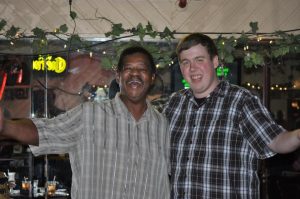
With Jerry Lawson
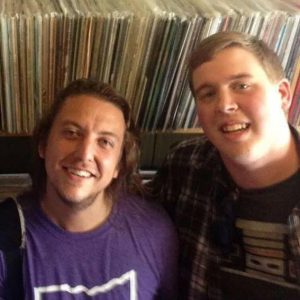
With Terry Cole of Colemine Records
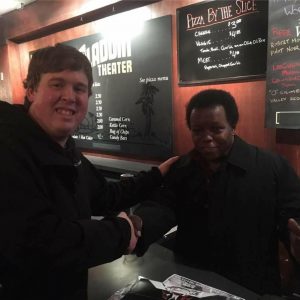
With Lee Fields
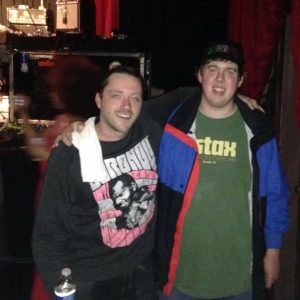
With Kelly Finnegan


